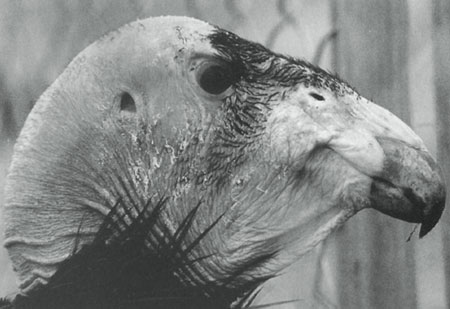This Article From Issue
September-October 2006
Volume 94, Number 5
CONDOR: To the Brink and Back—The Life and Times of One Giant Bird. John Nielsen. HarperCollins, $25.95.
In some respects the California condor (Gymnogyps californianus) has outlived its time. The enormous bird, with a 10-foot wingspan, evolved to scavenge the carcasses of giant mammoths and ground sloths that disappeared 12,000 years ago at the end of the Pleistocene. Even so, the species hung on gamely through much of the modern era, feeding on the remains of whales that washed up on the beach and the leftovers of lesser beasts. But the big scavenger eventually met its match in the 19th and 20th centuries, as hunters, egg collectors and urban development gradually reduced the wild population to less than 20 birds by the mid-1980s.

Environmental writer and National Public Radio correspondent John Nielsen tells the story of the bird's near-demise and the federal government's controversial recovery program that ultimately saved the species from certain extinction. By 1987, all of the wild birds were trapped and brought to zoos, where they were bred with captive condors, such as Topa Topa (right), a notoriously antisocial male who has lived at the Los Angeles Zoo since the late 1960s. Nielsen provides an excellent account of the surprisingly ugly battles among scientists, private-interest groups and government officials that led up to the breeding program. The species has since been reintroduced to the wild, where a small number of birds are breeding successfully while trying to adapt to the trials of 21st-century California.—Michael Szpir
ORGANIC, INC.: Natural Foods and How They Grew. Samuel Fromartz. Harcourt, $25.
Earthbound Farm is not your typical organic producer. Its vast processing plants, fleet of refrigerated trucks and annual sales of $360 million dwarf those idyllic, small-scale farms that any mention of organic agriculture once called to mind. But things are changing—large chains like Safeway and Wal-Mart are now as essential to the industry as farmers' markets and co-ops.
In Organic, Inc., journalist Samuel Fromartz traces the rise of natural foods from a countercultural movement to an $11 billion business. With this success has come a furious debate about the meaning of the term organic. Some in the industry argue for remaining true to the ideal of small, diverse farms that sell locally. Others want to broaden the reach of organic foods, even if it means compromising on production methods and using aggressive business tactics. The conflict seems to be partially a product of the strange mix of personalities involved. Fromartz puts their stories at the center of his book, making it entertaining as well as informative. He doesn't think that the two approaches to organic farming are mutually exclusive. Both, he says, offer enormous advantages over conventional agriculture.—Amos Esty
AGLOW IN THE DARK: The Revolutionary Science of Biofluorescence. Vincent Pieribone and David F. Gruber, with a foreword by Sylvia Nasar. The Belknap Press of Harvard University Press, $24.95.
The wink of fireflies at dusk inspires wonder. How do living things make light? In Aglow in the Dark, cellular physiologist Vincent Pieribone and oceanographer David F. Gruber tell the engrossing story of what scientists have learned about bioluminescence over the past few decades.

The first humble experiments involved squeezing thousands of glowing jellyfish through a cotton handkerchief, but today bioluminescence is a billion-dollar biotech enterprise. Green fluorescent protein, or GFP, has become one of the most useful tools in molecular biology. Because GFP is encoded by DNA, it can be turned on or off in specific cells in a transgenic organism. When fused to another gene, GFP can put a fluorescent label on one of the cell's own proteins. Thus a scientist can tell where and when a given gene is active without killing the cell or the specimen. Being able to track individual molecules in live organisms has helped bridge the significant gap between molecular biology and physiology.

After relating the history of the field, the authors discuss their own work among the coral reefs of the South Pacific (Gruber) and in the brains of transgenic mice (Pieribone). (Shown above, right are mouse neurons labeled with two GFP variants—cyan fluorescent protein and yellow fluorescent protein; at left is the fluorescent coral Acropora latistella, from the Great Barrier Reef in Australia.) Pieribone and Gruber want to find a new fluorescent molecule, one that is excited by long-wavelength, lower--energy light waves that could pass through an intact skull. With such a tool, it might be possible to watch the brain work, molecule by molecule, cell by cell, circuit by circuit. —Chris Brodie




American Scientist Comments and Discussion
To discuss our articles or comment on them, please share them and tag American Scientist on social media platforms. Here are links to our profiles on Twitter, Facebook, and LinkedIn.
If we re-share your post, we will moderate comments/discussion following our comments policy.